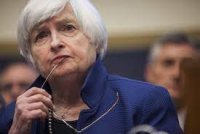How Elvis Presley Got Americans to Accept the Polio Vaccine
Campaigns to change behavior thrive on three factors: social influence, social norms and vivid examples
Elvis Presley is vaccinated on The Ed Sullivan Show, 1956. Credit:
Getty Images
In late 1956, Elvis Presley was on the precipice of global stardom. “Heartbreak Hotel” had reached number one on the charts earlier that year and
Love Me Tender, his debut film, would be released in November. In the midst of this trajectory, he was booked as a guest on the most popular TV show at the time,
The Ed Sullivan Show. But he wasn’t only there to perform his hits. Before the show started, and in front of the press and Ed Sullivan himself, Presley flashed his swoon-worthy smile, rolled up his sleeves and let a New York state official stick a needle loaded up with the polio vaccine in his arm.
At that point, the polio virus had been ravaging the American landscape for years, and approximately 60,000 children were infected annually. By 1955, hope famously arrived in the form of Jonas Salk’s vaccine. But despite the literally crippling effects of the virus and the promising results of the vaccination, many Americans simply weren’t getting vaccinated. In fact, when Presley appeared on the Sullivan show, immunization levels among American teens were at an abysmal 0.6 percent.
Clearly though, those aren’t winning strategies today, and they weren’t back in 1956. What did prove successful was Elvis getting the vaccine in front of millions. In fact, after he publicly did so, vaccination rates among American youth skyrocketed to 80 percent after just six months. Why might this be the case, and are there lessons that can be applied to the rollout of the COVID-19 vaccine?
Elvis’s public act contained three crucial ingredients inherent to many of the most effective behavioral change campaigns: social influence, social norms and vivid examples.
How Elvis Got Americans to Accept the Polio Vaccine









